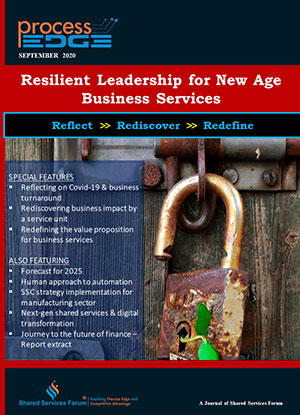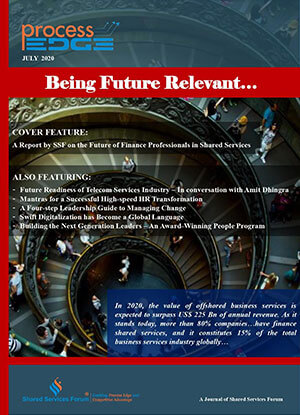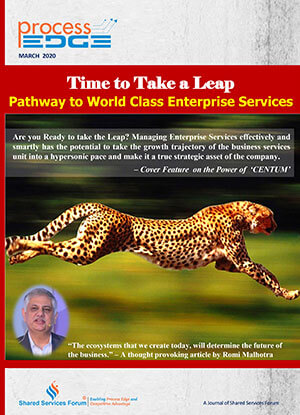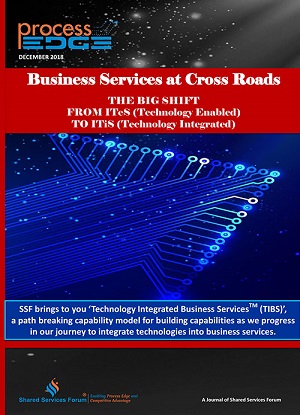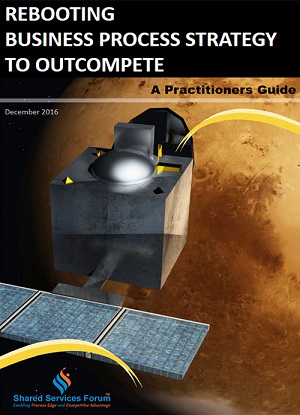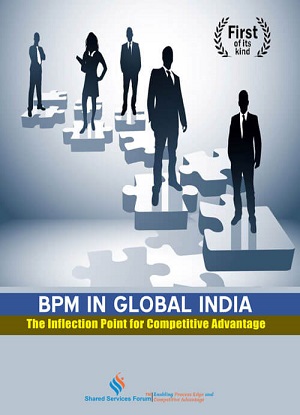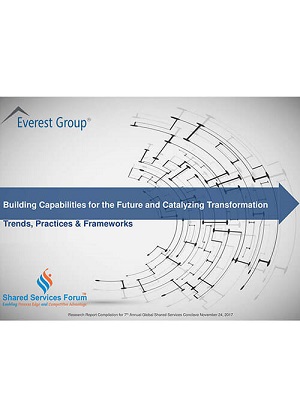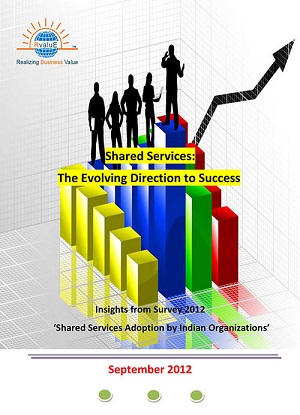
Would you like to start a conversation with other industry leaders to brainstorm a challenge or to just know more on a particular topic?
Engage in online discussions with your Peers
Start NowIn part 1 of this two-part series, we discussed the power of disruptive digital technologies and why and how they are transforming the entire business world, including the Global Business Services (GBS) organization.
The question is, how can GBS organizations mature and rise to the digital challenge? After all, the times they are “a-changing ” — and according to Anshul Varma, a managing director in KPMG’s Shared Services and Outsourcing Advisory practice, the old way of doing things will no longer pass muster.
“If you stitch the story of what’s driving this change, it is that the C-suite is demanding better operational quality, faster response to customer needs, and better insights, enabled by technology, and many GBS organizations lack the capabilities to pivot to this change,” says Varma. “Many of those capabilities require new ways of doing things.”
KPMG looks at GBS capability through the lens of 10 different dimensions:
“Those 10 dimensions have not changed, but we’ve found that digital touches every one of them,” says Michael Petrena, Director of Shared Services & Outsourcing at KPMG. “There is either a new disrupting technology, such as digital labor; or a new way to approach customers, with processes like design thinkingand customer journey mapping, which also orient themselves to various disruptive technologies such as mobile.”
Building new GBS ‘muscle’ through digital capabilities
Global Business Services (GBS) is on the cusp of a major leap forward to support transformation. The next evolution of digitally-enabled business services allows organizations to take better advantage of the technological advances that are having an impact on the enterprise operating model.
Digitally-Enabled Global Business Services (dGBS) is a set of capabilities that incorporates digital technology, data, and management methods to expand GBS organizations’ service offerings and enable GBS organizations as a strategic business partner. For today’s GBS organization to thrive, it needs to build and use new “muscle,” or capabilities, that accentuate what already exists and goes beyond it in the digital space.
For example, GBS organizations have always had to focus on talent management, says Petrena, but now they must focus on attracting talent with the appropriate skillsets for digital GBS. “Those skillsets are changing as components from governance and service delivery to data and analytics are changing,” he explains. “We view this as getting more robust — you’re starting to apply advanced technology and process and to a traditional view of GBS, and overlaying a digital muscle on top.”
Another example is service delivery strategy: In the past, the typical service delivery questions for a GBS organization would be insourcing versus outsourcing or onshore versus offshore. Today, the organization more often needs to understand what can be automated. It is an all-of-the-above service delivery strategy, not either/or. “Automation through intelligent automation is an extremely viable option, but you need to add that ‘muscle’ to be able to assess your service delivery model and match the appropriate technology to the service delivery solution,” says Varma.”
Reimagining Global Business Services: Today’s GBS Call to Action
Digital GBS brings new service delivery models, enhances customer experience, provides data insights, and helps the organization leverage new technologies to drive operational excellence.
What GBS organizations need to do in order to get there, says Varma, is to understand and assess their capabilities today.
“As you look at each of the 10 GBS capability dimensions, there will be certain ones where you have a bigger gap,” he explains. “Focus on those two or three capabilities that you need to prioritize and focus on the most. Next, develop specific actions to enhance those capabilities, to build that new muscle, and then you get to the implementation of that capability.”
Some of the traditional GBS capabilities are considered easier and quicker to implement and see returns with digital than others. Intelligent Process Automation, for example, can offer quick wins even without a longer-term approach. Other areas might need to be aligned with future technologies. “Data and analytics come to mind,” says Petrena. “If you are expanding data analytics to the back office, that can require some longer-term decisions.” For example, how will D&A be incorporated? Will it be via building an internal D&A capability, or buying them through a third party provider? Mobile and social technologies also require in-depth assessment and can take longer to make real change. “By their very nature, when considering social and mobile solutions, you have to take the customer, whether internal or external, into consideration,” he adds. “Without that, implementing mobile solutions is pointless. Mobile/social and customer centricity have to go together or you won’t be successful.”
As companies consider enhancing their digitally-enabled GBS capabilities, they should begin by defining the transformation they want to achieve and then, to begin with, “building muscle” in six essential areas:
Embrace technology to expand your service portfolio. Consider for example, adding service portfolio capabilities in data analytics or robotic automations, delivered through specialized Centers of Expertise (COEs).
Tweak your service delivery model. Rethink what work needs to be performed, by whom and where. Rebalance your use of captive and outsourced delivery centers. Evaluate what activities can be automated through robotic and cognitive technologies.
Match disruptive technologies to your transformation agenda. For example, use software bots to automate tedious, repetitive tasks, while identifying artificial intelligence and machine learning automation opportunities for activities that require analytics, prediction and clustering, based on data.
Include new methods. Process and service deployment in the digitally-enabled GBS world will need to include new methods such as Design Thinking and Customer Journey Mapping. For example, this can help provide detailed insights into disconnects in your supply chain.
Disrupt commercial Models. Disruptive technologies are creating opportunities to disrupt current commercial models, making them more outcome and engagement focused. For example, by running GBS as an innovative and independent business unit, firms can significantly accelerate the benefits of mergers, acquisitions and spin-offs.
Expand talent pools to include skills that will be needed in the future. For example, you could tap into talent on demand through gig-economy workforce platforms. A large automotive company is aggressively training its GBS workforce to build, maintain and support software bots.
The assessment can be incorporated into building a strategy for a GBS organization that is new or wants to transform. The understanding of where the GBS organization is today, as well as the capabilities required to develop new muscle, can often be accomplished in a matter of 4-8 week efforts, says Varma. Beyond that, he adds, “It depends on what you need to do and how big the gap is from where you are and where you need to be. The most important thing you can do is not to watch from the sidelines. Get involved. Disrupt your GBS models with technology, or get ready to be disrupted. ”
Source: Cio







